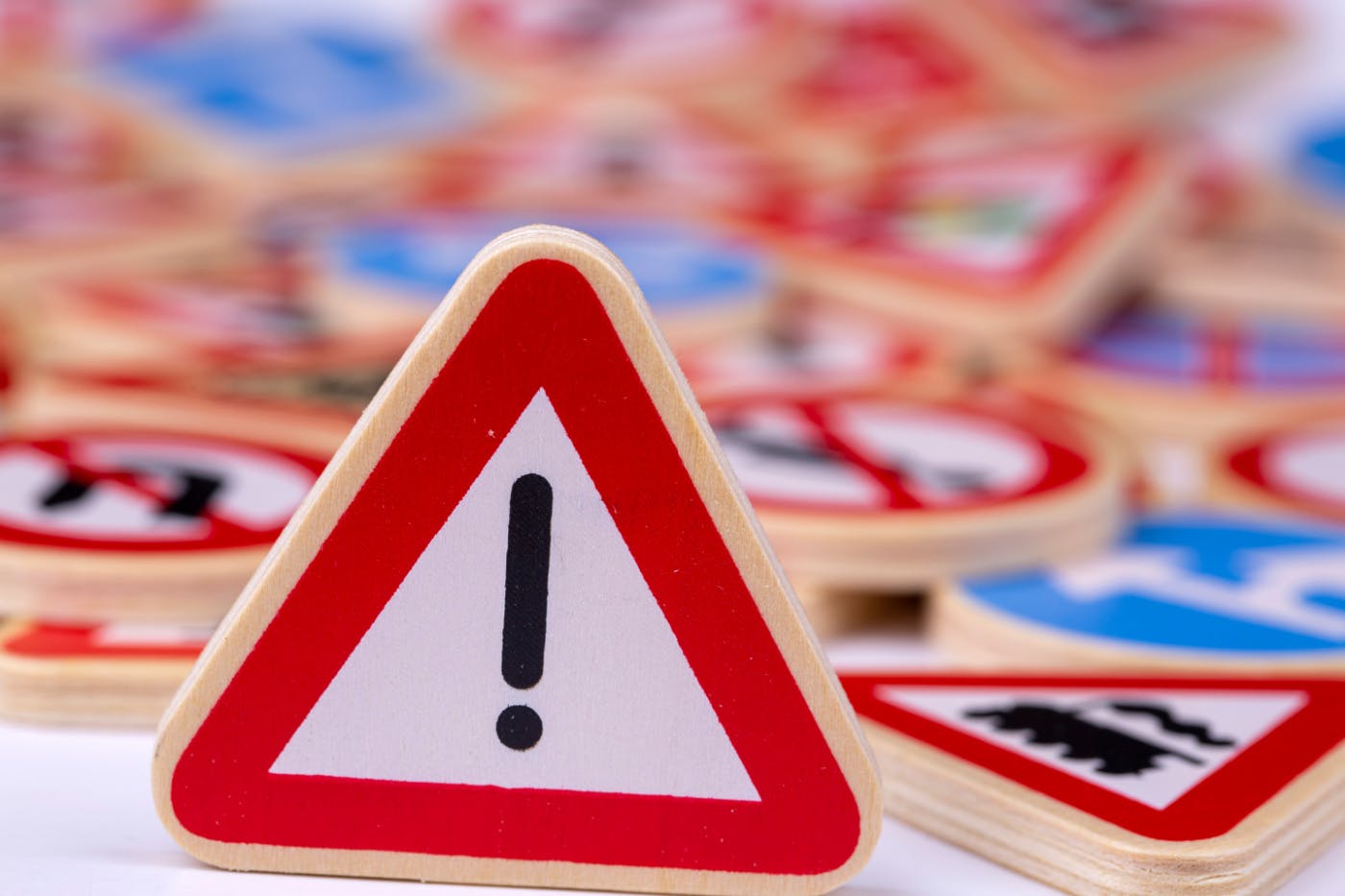Minnesota’s Comparative Fault Laws

In Minnesota, you can seek compensation for an injury even if you were partially at fault. This right is due to Minnesota’s comparative negligence laws, which are summarized here.
Key Takeaways
- Minnesota uses a modified comparative negligence rule.
- You can still seek compensation even if you are partially at fault for an accident, as long as you are 50% or less responsible.
- Your percentage of fault will reduce any compensation awarded.
- To maximize your chances of winning fair compensation, you must show that the other party was primarily at fault for your injury.
What Is Comparative Fault?
Comparative fault, also known as comparative negligence, means multiple parties can be considered at fault for an accident or injury. Each party's responsibility is compared to determine how much compensation, if any, will be awarded. Minnesota's modified comparative negligence rule, stated in Minnesota Statute Section 604.01, allows a person to recover damages for an injury if their degree of fault is not greater than the defendant's. This modified comparative negligence law is commonly known as the 51 Percent Bar Rule.
For example, if two drivers are involved in a car accident, both may be partially at fault. However, the driver who is more to blame, and their insurance company will likely owe compensation to the other driver, who is less culpable. This legal principle is known as a modified comparative negligence rule. (See case examples below.)
Minnesota Injury Law and the 51% Bar Rule
Under Minnesota law, you can pursue compensation if you bear less than half of the responsibility for an accident. You cannot receive compensation if you are found to be 51% or more at fault. However, if you have contributed 50% or less to the accident, you can still file a successful claim.
However, the compensation you receive will be reduced by the percentage of fault you bear. For example, if you are entitled to $1,000,000 for an injury but were 30% at fault for the accident, your compensation will be reduced by $300,000. You will then receive $700,000. Additionally, you collect nothing if your fault is assessed at 51% or greater!
Comparative Fault in Personal Injury Cases
Comparative fault is a significant factor in Minnesota's personal injury claims. Without it, injured people would have no claim for damages if they contributed to the injury, no matter how small their responsibility.
Comparative fault is especially common in certain personal injury cases, such as:
- Car accidents
- Bicycle and pedestrian accidents
- Slip and fall accidents
- Product liability claims
How Fault Is Determined in a Minnesota Injury Case

In Minnesota, the court/jury determines the percentage of fault for each party involved in an accident. This process involves evaluating evidence such as witness statements, law enforcement investigations, and expert testimonies. Once the fault is determined, the compensation awarded to the injured party is reduced by their percentage of fault. A recovery can then be made, as long as the fault does not exceed 51% or more.
Let’s take a closer look at how fault is determined.
Step 1: Collecting Evidence
Gathering evidence is the foundational step in determining fault. This process involves collecting all available information to create a comprehensive picture of the incident.
- Witness statements: Testimonies from witnesses can provide crucial details about the incident. Witnesses may include bystanders, other involved parties, or experts who can speak to the conditions leading to the accident.
- Law enforcement: Often, law enforcement responds to accidents and compiles reports that include their observations, statements from those involved, and sometimes their initial assessment of fault.
- Photos and videos: Visual evidence from the scene, such as photos or videos taken immediately after the incident, can help reconstruct the events leading up to the accident.
- Expert testimony: Expert witnesses can analyze the available evidence to provide a professional opinion on how the accident happened and who is at fault.
Step 2: Review of Relevant Laws
Relevant laws play an important role in determining fault.
- Relevant laws and regulations: Attorneys will examine any applicable laws and regulations that may have been violated. Violations can significantly impact fault determination.
- Negligence standards: Minnesota law evaluates each party's behavior against what is considered reasonable under the circumstances, including actions like distracted driving, failure to maintain premises, or inadequate warnings on products. If a party was negligent by reasonable standards, that will be a factor in determining their fault.
Step 3: Comparative Analysis
Fault apportionment involves comparing the actions of each party to determine their respective contributions to the accident.
- Fault apportionment: Based on the gathered evidence, each party’s level of fault is quantified. This analysis involves comparing their actions to determine how much each contributed to the accident.
- Compensation: Compensation is allotted accordingly based on the percentage of fault assigned to each party.
Step 4: Legal Representation
The role of a personal injury lawyer is crucial in navigating the fault determination process.
- Lawyer’s role: A skilled personal injury attorney gathers and presents evidence, challenges the opposing party’s claims, and advocates for a fair apportionment of fault. They ensure that their client's level of fault is minimized to the greatest possible extent.
- Negotiations: Lawyers often negotiate with insurance companies and other parties to reach a settlement accurately reflecting the fault distribution.
Step 5: Going to Trial
If a settlement cannot be reached, the case may go to court, where a judge or jury will determine the fault based on the presented evidence.
- Presentation of evidence: All collected evidence, including witness statements, expert testimonies, and accident reconstructions, is presented in court.
- Judicial review: The judge or jury reviews the evidence and applies the relevant laws to determine fault and award compensation accordingly.
Examples of Comparative Fault in Action
Example 1: Car Accident
John A. and Lisa B. are involved in a car accident at an intersection. Moments before the accident, John ran a red light while Lisa was speeding. While John's failure to stop was the primary cause, Lisa's speed worsened the accident.
The court determined that John was 75% at fault and Lisa was 25% at fault. Lisa’s total damages amounted to $200,000, so her compensation was reduced by 25%, down to $150,000. John is ineligible for compensation since he is more than 50% at fault.
Example 2: Slip and Fall Accident
While shopping, Alice slips and falls in a grocery store due to a wet floor. Although there was a "Caution: Wet Floor" sign, it was not easily visible. Security footage shows Alice slipping where the sign was partially obscured. A safety expert testifies that the store failed to place the warning sign correctly, contributing to the accident.
The court finds the grocery store 80% at fault and Alice 20% at fault for not being more cautious. Because Alice's total damages amount to $100,000, compensation is reduced by 20%, down to $80,000.
Example 3: Product-Related Injury
Mary purchases a blender that malfunctions and injures her hand. The manufacturer argues that Mary did not follow the safety instructions properly and refused to settle.
The judge finds that Mary's misuse contributed to the incident while the manufacturer produced a faulty product. The manufacturer is found to be 70% at fault for making a defective product, and Mary is found to be 30% at fault for not following the safety instructions correctly.
If Mary’s damages amount to $500,000, her compensation would be reduced by 30%, resulting in an award of $350,000.
Comparative Fault FAQs

How is negligence proven in a Minnesota personal injury case?
In Minnesota, negligence hinges on four key elements:
- Duty of care: Someone had a responsibility to keep you safe or avoid endangering you.
- Breach of duty: The other person breached their duty of care through action or inaction.
- Causation: The other person’s breach of duty directly caused your injury.
- Damages: You suffered actual damages as a result of the injury.
By proving these elements, you can show that the other party caused your injury through negligence and thus owes you compensation.
How does comparative fault affect my personal injury case if multiple parties are involved?
If multiple parties are involved in an accident, each party's fault will be evaluated and assigned a percentage. The percentage of your fault will reduce your compensation. As long as your percentage of fault doesn’t exceed 50%, you can still recover damages. If other parties are also at fault, their share of the responsibility will be considered to determine your total compensation.
How do insurance companies handle comparative fault claims?
Insurance companies will conduct their investigation to determine fault and may try to minimize their liability by attributing a higher percentage of fault to you. Having a personal injury lawyer represent you is highly recommended to ensure that the fault is assessed fairly and you receive the compensation you deserve.
Does comparative fault apply to workplace injuries in Minnesota?
Comparative fault can apply in some workplace injury cases, particularly if a third party is involved (e.g., a contractor or equipment manufacturer). However, workers' compensation claims operate under different rules, and fault is typically not a factor in determining benefits under Minnesota's workers' compensation system.
How long do I have to file a personal injury claim in Minnesota under comparative fault rules?
In Minnesota, the statute of limitations for filing a personal injury claim due to negligence is generally six years from the date of the injury. It's essential to file your claim within this period to avoid losing your right to seek compensation. Other limitations exist with shorter time frames of as short as two years. Getting your specific case analyzed sooner rather than later by a “Know Your Rights” attorney is best.
How does comparative fault affect settlement negotiations?
During settlement negotiations, the parties involved will discuss (and often dispute) the percentages of fault. Your attorney will negotiate on your behalf to reduce your assigned fault and increase the compensation you receive. Settlements can be reached more quickly when both sides agree on the fault distribution.
Does comparative fault apply to all types of personal injury claims in Minnesota?
Comparative fault applies to most personal injury claims in Minnesota, including car accidents, slip-and-fall incidents, product liability cases, and even medical malpractice claims. However, each case is unique, and specific legal principles may vary based on the circumstances of the injury.
Can I appeal the fault determination if I disagree with the court's decision?
Yes, you can appeal the court's decision if you believe there has been an error in determining the fault or if new evidence has come to light. Consulting with an experienced personal injury lawyer can help you understand the grounds for an appeal and the process involved.
Will I have to go to court?
Hopefully not. Most personal injury cases are settled out of court. However, if a fair settlement cannot be reached, your case may go to court, where a judge or jury will determine fault and award compensation based on the presented evidence. Your SiebenCarey attorney will present your case and fight for your rights!
Get Help from a Minnesota Legend: The “Know Your Rights” Law Firm of SiebenCarey
Whether you're dealing with an injury caused by a car accident, slip and fall, or any other accident, having the right help in your corner can make all the difference. That’s where we come in.
SiebenCarey is one of Minnesota’s oldest and largest personal injury firms, with 70 years of experience helping people like you get the compensation they need. When you team up with SiebenCarey, you’ll get the full benefit of:
- Decades of experience in settlement negotiations and jury trials
- A distinguished record of successful verdicts and settlements
- Extensive legal resources to back the most challenging cases
- A widely-acclaimed team of lawyers, paralegals, and accident scene investigators
- The “Know Your Rights” guarantee of genuine care and clear communication
And we always handle cases using a contingency fee arrangement. That means you won’t owe us anything unless we win your case.
Just let us know, and we’ll be happy to help you however we can!












